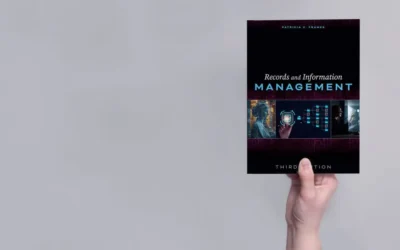Watching the Future: Tracking Library Trends

Stephen Abram
So, as we continue to overcome the challenges of an ever-increasing array of major technological and economic changes, we must continually improve how we represent ourselves. Let’s emphasize the humans who make the magic happen. . . Librarians! Let’s focus on VALUE, IMPACT, and POSITIONING (VIP). I believe that this is the best way to sustain our relevance and thrive. Our issue isn’t survival, but having the best and most effective impact on the health of our organizations and clients and the decisions they make. We improve the quality of questions. We improve the quality of decisions. We save time as we efficiently and effectively speed up the process, and we align all resources with our enterprise’s needs.
To accomplish a sea change in the perception (our own and others’) of our profession we must:
- Emphasize the librarian and not the physical library and its resources
- Build authentic long lasting and personal relationships with our clients
- Be positioned as ‘real’ and specially qualified professionals who offer professional services—and that includes ‘advice’
- We must tell our stories. It’s the stories that happen between librarians and clients that matter. . . not just the ones on our shelves or in our files
So, let’s resolve to:
Tell those stories
Better yet. . . collect and share those stories in our clients’ voices
Encourage the heart. . .
If we care about the future of our brand of specialized librarianship, we will not worry about change, but instead, heartily embrace ‘the new normal’ in our world. Continuous change simply provides evidence that we’re not fossilizing! We must anticipate the future, track emerging trends, and make them our own.
In this post, I’ll share what I use to filter the fads from the trends, as well as what hot technologies I plan to continue tracking.
My filters
Determining what is a fad and what is a critical trend is difficult, but I’ve learned a few things over the years. So, I ask myself these questions:
- Will this improve the experience of the real client? Does it just make my life better or easier, or does it have wider application to the needs of decision makers? For example, I love it when I can watch clients use stuff and then I can focus on understanding their experience as a human—and not just my experience (and assumptions about) using a fun, bright shiny thing.
- If this seems like a bright shiny fad, is there something material there that is longer term? For example, I never loved QR codes but the ability to place content locally and in context appealed to me—and now I think NFC and Beacons seamlessly integrated with smartphones are the cat’s meow.
- Does this new and trendy tech support only information delivery or can context be provided too? Can you add point of view and bias to context and content? For example, social media ‘shiny’ things triumphed over e-mail because they supported collaborative and social opinion sharing, not just plain information sharing and delivery.
- Does this tech align with real humans—the normal ones? Or will it only work for a narrow range of geeks, nerds, librarians, etc.? It may be fine if they’re the ones it’s aimed at, but it won’t make it out to the real world with all its complexities of personalities and behavior.
- Does this tech tool or service support evolutionary change versus a revolution? Is everything going to have to be dropped from the past or can we adapt more slowly? It may be fine to have a revolution, but not every day and not all the time for everything.
- Does this innovation meet the criteria of the Four Horsemen: Scalability, Replicability, Sustainability, and Trainability? If it’s just me, then who cares? Or if it’s 5,000 co-workers then that can become a major headache very fast.
- Do I have people in my test group who are early adopters or innovators? Really, getting someone who hates technology (or change) to test new things doesn’t give me the advice I need at this stage. Understanding the Adoption Curve and working with folks who can deal with ambiguity or not-ready-for-primetime innovations is a great gift. It’s always fun to look back on the articles—some in our field—about people who labeled telephones, the Internet, web search engines, social networks, etc. as fads.
Shift happens: trends to track
Some of the below trends continue from the past, and some are just entering our field of vision now. Anyway, in no particular order, here is a highly personal list of the kinds of stuff I find interesting to track:
- I am seeing a split in e-content between non-fiction and fiction. To date a lot of the public conversation on e-books has been popular reading or fiction-centric. Our specialized field rarely depends on this content genre and therefore the different changes happening in scholarly and non-fiction content are worthy of separate monitoring. Any technology that allows for integration of content with workflow appeals to me. Any tech that integrates hard copy and digital sources in a seamless, hybrid manner also excites me.
- That said I am also seeing an ongoing merger of different media formats—especially in the non-fiction space where text, video, podcasts, etc. are starting to be increasingly integrated into the discovery results. I believe there is no reason for our library digital discovery initiatives to separate primary search by format. Too many digital libraries are organized around format as if they were still shelving issues! Format should basically be a choice following discovery.
- I love to follow the ongoing death (or least life-support) for the landline home phone. Most folks have switched their primary allegiance to their pocketed personal phone and this isn’t really primarily a phone at all but a personal device meeting a plethora of needs. I speculate that the swing will start to swing the other way (just like the integrated Hi-Fi TV, Radio, Record player) of my youth went into components before moving to my tablet/phablet/smartphone.
- I follow the trends in Transliteracy (credulity, critical thinking) as reading literacy evolves into a more digital world. I worry that algorithms controlled by a very few companies (like Big G) run the risk of taking away our freedom of choice as ‘real’ researchers.
- I love to follow trends in the publishing sector since we’re so dependent on this sector for quality content—self-publishing, decline of print newspapers, evolution of the textbook to learning system, etc. As more content creators have access to distribution networks, our role in sifting and winnowing becomes increasingly important. Specifically, I am following the trend to explode the book format—the so-called corpus. We have already exploded the periodical format where few of us subscribe mainly to print journals and have really entered a post-journal world and subscribe to collections of millions of articles. Is there any sense in most non-fiction or scholarly works being trapped in their bindings? Shouldn’t we free the chapters and paragraphs and allow them to be retrieved as separate records and integrated with others—like articles? It’s starting to happen.
- I follow trends in licensing and new rules around single use print and hybrid use, the ability to re-use and mash-up content and the hierarchy or rights and the associated good (like OA, OS) and bad technology options (like DRM).
- I was part of the generation that moved from print indices to online retrieval including fulltext. I continue to be part of the next post-retrieval phase as we focus on the experience, and assemble tools and technologies in the services of discovery, curation, findability, access, and creativity in the pursuit of knowledge and insight. So, the next steps in LinkedData, OpenURL, RDA, federated search discovery systems, and more are intensely interesting and the development of new standards of interoperability beyond Z39.50 are important to follow.
- I’ll read anything that speaks to end-user attributes—member / audience / user personas, demographics, generational change, etc. If we don’t understand the user, who will? Programmers? Management? Also, new developments in our understanding of the brain, behavior, genomics, human development, thinking, etc. are all grist for the mill of library science and education.
- We’ve seen in our lifetimes a strong move away from direct communication—one-on-one telephone calls, letters, and memos—to a world dominated by social media conversations. Not only do we need to use social media as a critical information source but we need to be present in that world to communicate the value of the librarian.
- There are a few key raw technology trends that are emerging as game changers in our world and beyond. You know most, so I’ll just list them here as things to watch as they evolve the platform foundations of technology upon which we sit:
- The Cloud—a disruptive game changer if there ever was one especially for our ILS and LMS space.
- Responsive design and its evolution beyond the mobile pain point.
- LinkedData and its potential to transform discovery engines—follow what’s happening at DPLA and OCLC.
- E-Learning, MOOCs, and accredited online certificates, diplomas and degrees.
- Beacons—beyond QR codes and NFC with the potential for putting the library proactively into every pocket. Things like LibraryBox are just a start.
- BIG Data and little data—statistics, metrics, insights, analysis, the numbers—the tools are becoming more awesome every day, but computers can only do analytics; humans do analysis.
- Anything that has to do with the Maker Movement—maker, hacker, writer, hobbyist—and its clear and emerging potential to transform and disrupt STEAM (science, technology, engineering, arts, and medicine). Few of us don’t depend on these domains for our work lives.
- Innovation in libraries where we advance progress through greater cooperation and collaboration in consortia, collaboratives, alliances, and partnerships is something I track. The old models are failing and need renewal. We will find this Renaissance through working more strongly together (maybe even through our associations) or by independently leading the way through personal innovation—perhaps via embedded librarianship, consulting, or other alternatives using our valuable competencies.
An Industrial Revolution for libraries
I love following the folks who are involved in the Startup Library mentality: the ability to grasp and engage in an emerging culture for librarianship focused on change, innovation, experimentation and finding the future. While some worry about a continuing malaise in our field where the stories are all bad and we’re all doomed, I choose to focus on indications of positive, transformational change.
If you want to follow what I notice and read, feel free to check out my blog Stephen’s Lighthouse, and add me to your personal learning feeds.
-Stephen

Stephen Abram
Stan writes regularly for Lucidea’s Think Clearly blog. Subscribe to ensure you never miss a post with engaging information for KM practitioners and special librarians! Learn about Lucidea’s Presto, SydneyDigital, and GeniePlus software with unrivaled KM capabilities that enable successful knowledge curation and sharing.
Similar Posts
Interview with Author and Librarian Dr. Jae Rossman on Special Collections and Archives
Dr. Jae Rossman wrote Access to Special Collections and Archives, available now from Rowman and Littlefield. The book is an excellent resource for special librarians who work with special collections and archival materials.
Interview with the Author: Dr. Patricia Franks on Records and Information Management
Dr. Patricia Franks is the author of Records and Information Management, now with an upcoming third edition to be published by ALA Neal-Shuman in the spring of 2025. My interview with her follows.
Are There Drawbacks to Using GenAI for Research?
Researchers must take responsibility for understanding how GenAI works and closely review literature search results before relying on them. Let’s take a look at three major drawbacks for researchers and special librarians to consider when leveraging or recommending GenAI platforms.
Researching with GenAI: Tools & Tips for Special Librarians
When GenAI first became widely available, there was a great deal of discussion about how it would “hallucinate”—that is, make up content and sound very sure of itself when doing so.



